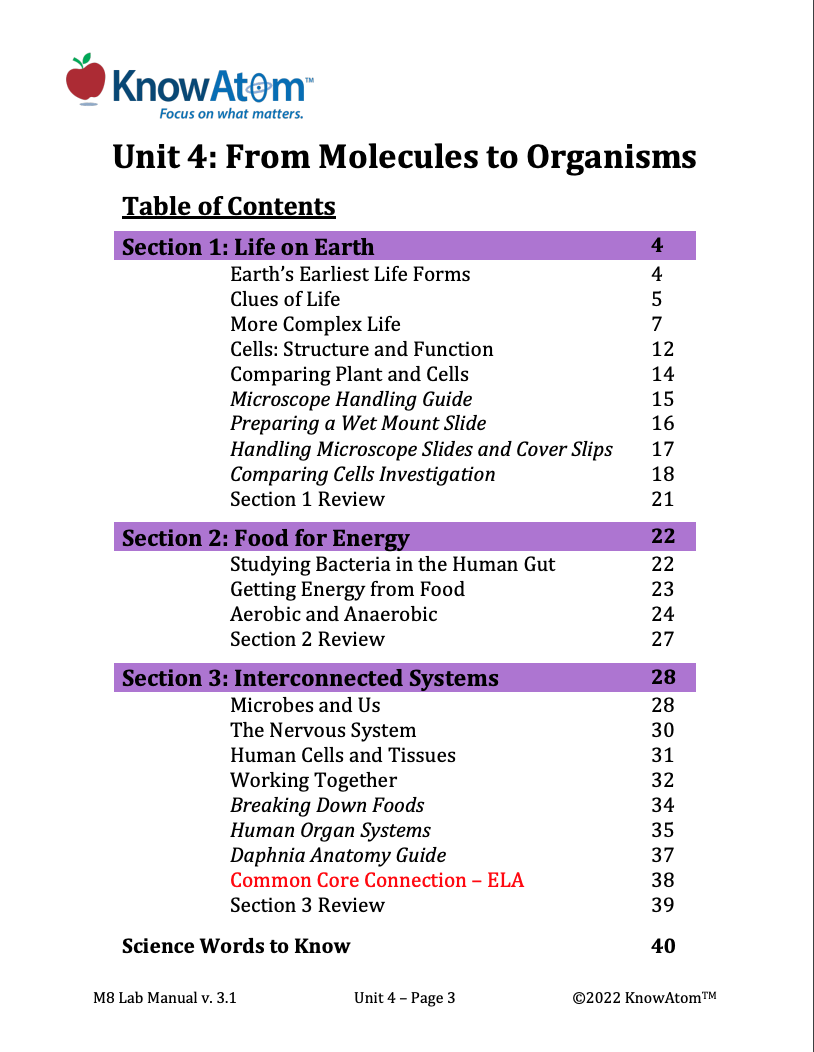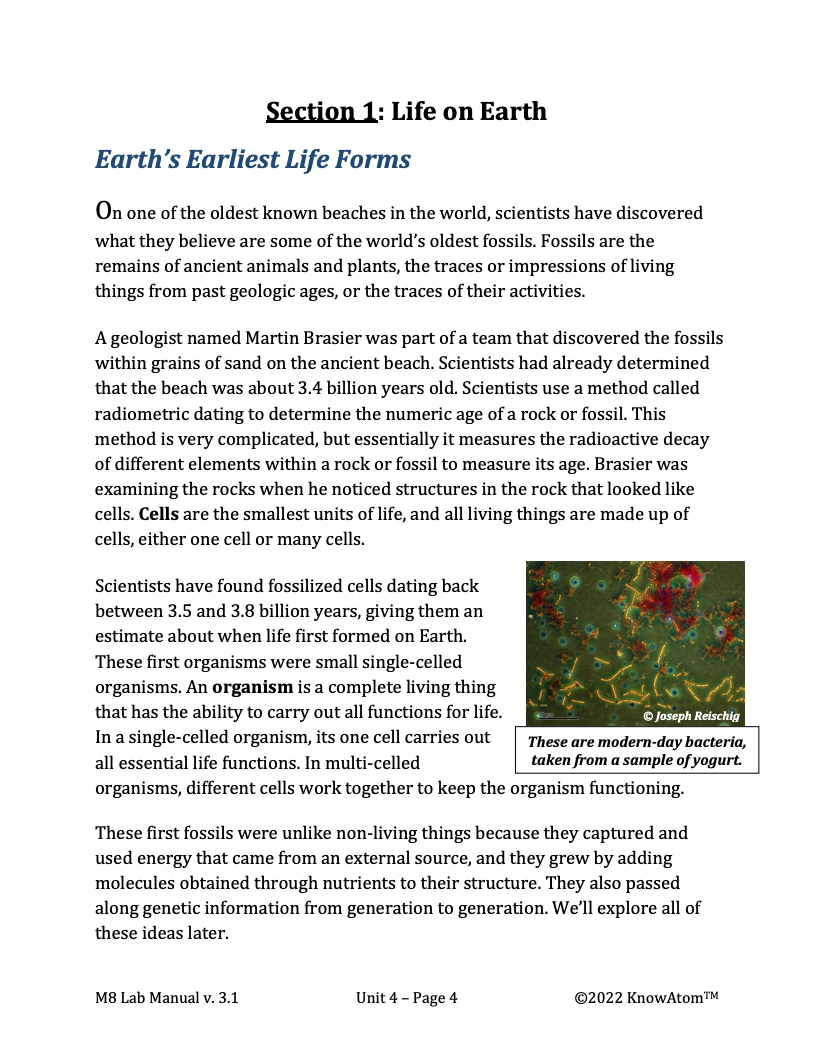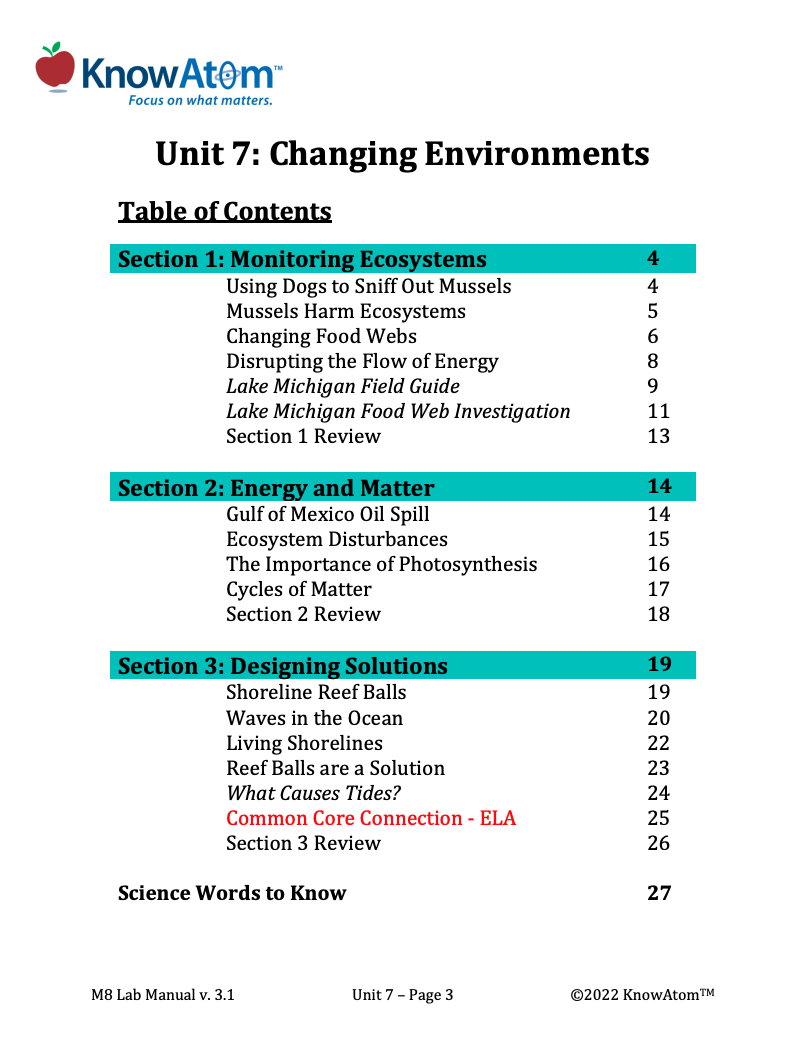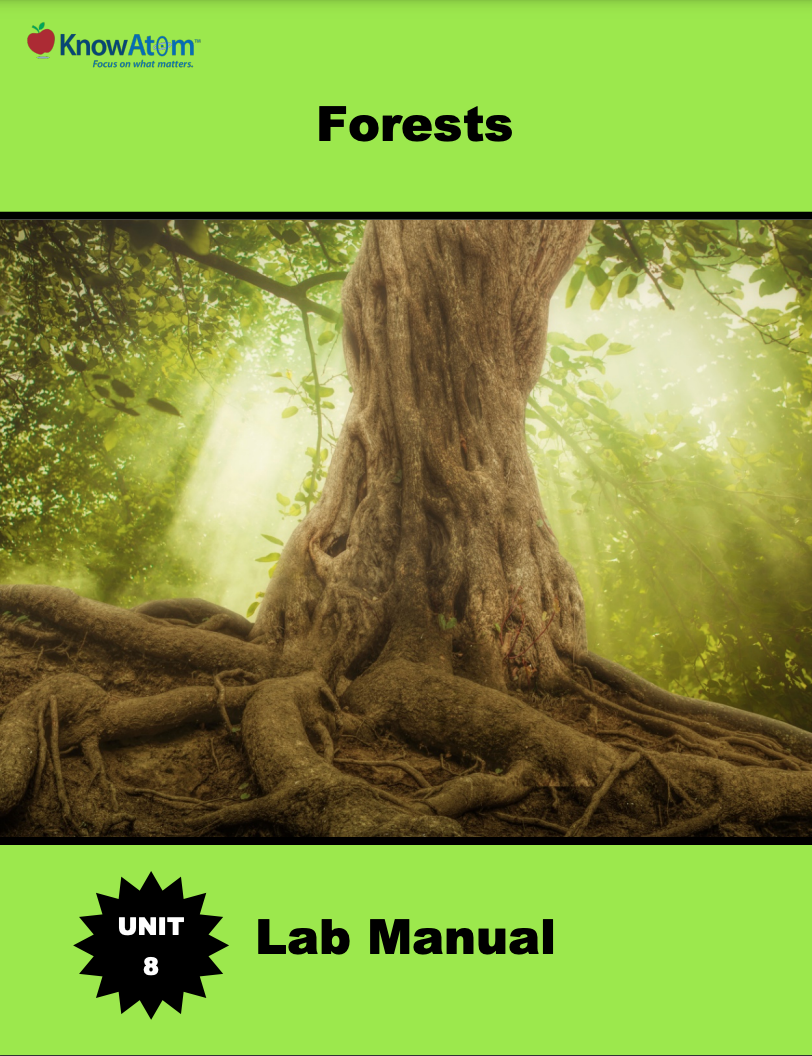
In this unit, students compare the science phenomena of bacterial, plant, and animal cells, figuring out similarities among them all as well as differences. Students then conduct an experiment into how yeast cells extract energy from food molecules. This page highlights components of this lesson.

In this unit, students explore science phenomena related to life forms that live on Earth, analyzing the cellular structures that make up complex organisms and how different groups of cells work together to keep the organism functioning properly. In this lesson, students test the effect of sucrose concentration on the heart rate of daphnia, observing how different organ systems work together. This page provides a high-level extract of this lesson.

In this unit, students are introduced to the dynamic nature of ecosystems and how disturbances affect them. In this lesson, students observe the effects of an oil spill on the ability of plants to photosynthesize, which can harm an entire ecosystem. This page is a high-level extract of this lesson.
.png)
In this unit, students focus on the relationship between an organism’s cellular structure and the ability of the organism to access energy to carry out essential life functions. Students begin by examining prokaryotic and eukaryotic cells under the microscope and then compare organelles in plant and animal cells in this lesson. This page is a high-level extract of this lesson.
.png)
In this unit, students explore the organisms that live on Earth’s surface, analyzing how living things are made of cells, which have certain requirements for survival, including food, water, and energy. In this lesson, students figure out the phenomena of energy transfer in living systems with a focus on how energy and matter flow through organisms. This page showcases excerpts from components of this lesson.

In this unit, students explore the phenomena of forest ecosystems, studying the science phenomena of interactions between living things and the environment. In this lesson, students investigate how plants carry out photosynthesis to convert the sun’s energy into a form of energy they can use to grow and develop. This page highlights key parts of this lesson.
Standards citation: NGSS Lead States. 2013. Next Generation Science Standards: For States, By States. Washington, DC: The National Academies Press. Neither WestEd nor the lead states and partners that developed the Next Generation Science Standards were involved in the production of this product, and do not endorse it.
